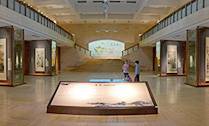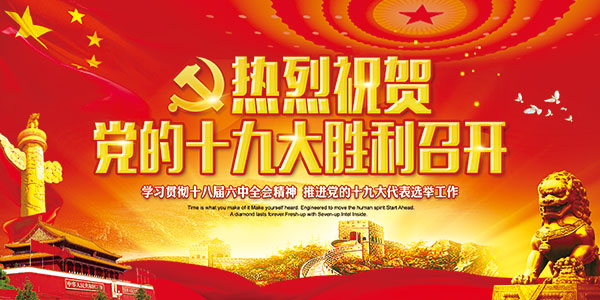The Pride of Lingnan: In Commemoration of the 110th Birthday of Chao Shao-an
Release time:15-09-23
As an accomplished leading representative figure of the Lingnan School of Painting, Chao Shao-an was a noted contemporary Chinese painter.
Original name Yuan and style name Shuyi, Chao Shao-an was born in Guangzhou, Guangdong Province in 1905. His native hometown is Shayuanli of Panyu County in Guangdong Province. In 1920 he met his mentor Gao Qifeng, one of the founders of the Lingnan School of Painting, and started to learn painting under Gao’s instruction. Chao took part in the Belgium International Exposition In 1930 and won a gold medal with his painting. In the same year, he first founded the Lingnan Art Studio in Guangzhou and in 1948, he moved to Hong Kong, setting up the Lingnan Art Studio to continue his passion in painting and teaching career. For decades, Chao was much sought to hold painting exhibitions and give lectures across Asia, Europe and America, winning him many awards. He quickly made his name the leading figure of the Lingnan School of Painting outside China mainland.In 1998, Chao passed away in Hong Kong at the age of 93.
Chao heralded the reformative philosophy of the Lingnan School of Painting and assimilated the strengths of both Chinese and Western painting styles. Having profound epiphanies with nature, he pursued the artistic conformity with nature. A paragon of paintings that embodies spirit and forms, his works are bestowed with vibrant and tenacious colours and bold brushstrokes, characterized by his “one-stroke” technique, creating his own unique art style that is more accessible to scholars and lay-people alike.
This year marks the 110th anniversary of Lingnan master Chao Shao-an’s birth. To commemorate this distinguished Chinese painting master, to promote the rich heritage of the Lingnan School of Painting and to enhance cultural exchanges between Guangzhou and Hong Kong, the Guangzhou Museum of Art, the Hong Kong Heritage Museum and the Hong Kong Museum of Art jointly present this exhibition of Chao’s selected works. Through the exhibition, we hope to further advocate the research of Chao Shao-an’s art.
2015 marks the 110th anniversary of Lingnan master Chao Shao-an’s birth. To commemorate this special occasion, the Guangzhou Museum of Art and the Hong Kong Heritage Museum work together in organizing an exhibition of his outstanding works and museum archives to show Professor Chao’s achievements in Hong Kong and Guangzhou, including more than 100 selected paintings in collection of cultural institutions in Guangzhou, Hong Kong and the USA etc.
In addition to this event, the Guangzhou Museum of Art also presents Tracing the Track: Document Exhibition of Chao Shao-an’s Art to showcase Professor Chao’s documents, historical photos, painting tools collected by the Museum or Chao’s family, as well as his sketches in collection of the Museum. This exhibition, based on the chronology of his life, displays the art career of Professor Chao in a documental perspective.
Now please join us in opening the book of Professor Chao’s life page by page, and discover his artistic footprint from these pieces of memories.
Last but not least, special thanks are due to Professor Chao’s family and the Hong Kong Heritage Museum for their great support.
Gao Jianfu and Gao Qifeng, brothers born in Panyu county of Guangdong Province, are referred to as the “Two Gaos” who were both masters in Chinese modern fine art history. In his boyhood, Gao Jianfu became student of Ju Lian, the famous Lingnan painter. In the last years of the Qing Dynasty, the Gao brothers went to Japan consecutively, getting inspiration from modern Japanese fine art, and rejuvenated Chinese painting. The Two Gaos joined the Chinese Revolutionary League one after another, and followed Dr. Sun Yat-sen for demoncratic revolution. After the 1911 Revolution, the Two Gaos withdrew from the political arena and dedicatd themselves to artistic reform, who later became founders of the Lingnan School of Painting.
As artists bearing historical ideals and missions, the Two Gaos advocated an “Art Reform”, which was in fact an extension to the political reform. When art meets reality, their pursuit of realism can be acheived. Their ideology of “Eclectic fusion of ancient and modern, Chinese and foreign” has made it possible to break through the limits of traditional Chinese painting format and create “New Chinese Painting” based on tradition yet borrowed experience from relistic modern Japanese painting techniques. They invented such paintings that can draw closer visual connections with the viewers, and shew a broader dimension in traditional Chinese painting. They sticked to the times and embraced reality, introducing ideologies of evolution and cosmopolitanism to Chinese painting and providing rich intellectual and linguistic resources for the development of Chinese painting.
By the joint efforts of the Two Gaos and other artists aspired to Chinese painting reform, the New Chinese Painting has transformed from an eclectic fusion into a better control towards life and the theme of the times, and hence development and rejuvanation are bestowed.
From 1929 to 1933, Gao Qifeng (1889—1933), one of the founders of the Lingnan School of Painting, resided in the Tianfeng Studio on Ersha Island, Guangzhou. During his illness, Gao insisted in painting and teaching. Hence, the term “Tianfeng” has close relation with Gao Qifeng and his disciples.
Amongst all the pupils of Gao Qifeng, seven were most outstanding, who were later called the “Tianfeng Seven”. However, different cadidates were referred to when people talked about the “Tianfeng Seven”: some believed that they are Zhou Yifeng, Zhang Kunyi, Ye Shaobing, He Qiyuan, Rong Shushi, Huang Shaoqiang and Chao Shao-an, while some believed that is was Feng Suichuan instead of Zhang Kunyi in the Seven. In addition, the “Tianfeng Six” and the “Tianeng Five” were also mentioned in various periods. All in all, these disciples, each had his strong points and influeced by Gao Qifeng in many ways, can be recognized as “Tianfeng Disiples”without question, and they were catagorized as artists of the Lingnan School of Painting.
The Tianfeng Disiples became very active in modern Lingnan painting circle. Dedicating themselves to painting and calligraphy, they were also enthusiastic in organizing or participating fine art association activities, leaving behind a great number of works with many among which are cooperative pieces. Chao Shao-an quickly made his name the leading figure of the Lingnan School of Painting outside of China Mainland, expanding the influence of the School abroad.
On such occasion, paintings by the Tianfeng Disiples in the collection of our museum are selected for this exhibition.We hope that the viewers may see the elegant demeanour of and intimate cooperation between these Tianfeng masters through the exhibition, and better understand the artistic path they had walked by.


 Party's mass line
Party's mass line Activity Booking
Activity Booking Hall of Fame
Hall of Fame Donation
Donation Construction
Construction